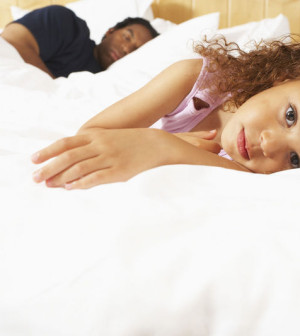- Skip Storing This Everyday Product in the Fridge Door
- Green Tea + B3 Pairing May Boost Brain Health
- Navigating Your Midlife Crisis: Embracing New Possibilities
- City Raccoons Showing Signs of Domestication
- Mapping the Exposome: Science Broadens Focus to Environmental Disease Triggers
- One Week Less on Social Media Linked to Better Mental Health
- Your Brain Changes in Stages as You Age, Study Finds
- Some Suicide Victims Show No Typical Warning Signs, Study Finds
- ByHeart Formula Faces Lawsuits After Babies Sickened With Botulism
- Switch to Vegan Diet Could Cut Your Greenhouse Gas Emissions in Half
More Airline Injuries to Tots on Laps

Infants who ride in an adult’s lap on airline flights are at greater risk for injuries than other children, a new study finds.
“Pediatric medical events on commercial airlines are relatively infrequent given the amount of passenger traffic, however unrestrained children, especially lap infants, are more likely to sustain an in-flight injury particularly during meal service or turbulence,” said study senior investigator Dr. Alexandre Rotta.
He is chief of pediatric critical care medicine at University Hospitals Rainbow Babies and Children’s Hospital in Cleveland.
Rotta and his colleagues analyzed data on more than 114,200 in-flight medical events reported by 80 major airlines worldwide between January 2009 and January 2014.
They found more than 10 percent involved children (newborn to age 18) and more than 3 percent involved in-flight injuries.
Thirty-five percent of all injuries involving children occurred among kids younger than 2 years old. The most common causes were scalding burns from spilled hot beverages or soups, and falls involving infants in laps.
Burns accounted for almost 40 percent of injuries, followed by bruises, cuts and closed head injuries.
Many in-flight injuries among children could be prevented by using child restraints, avoiding aisle seats, and by having lap infants travel in their own seat, according to Rotta.
“It is my hope the information we discovered will promote the development of preventative strategies and travel policies to protect the health of all pediatric airplane passengers, especially these most vulnerable infants,” he said in a University Hospitals news release.
The study was presented Monday at an American Academy of Pediatrics meeting in San Francisco.
More information
The U.S. Federal Aviation Administration has more on flying with children.
Source: HealthDay
Copyright © 2025 HealthDay. All rights reserved.










